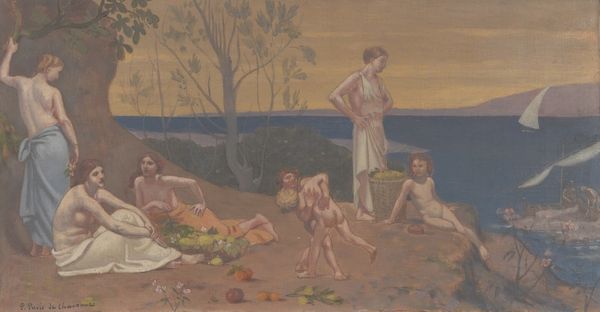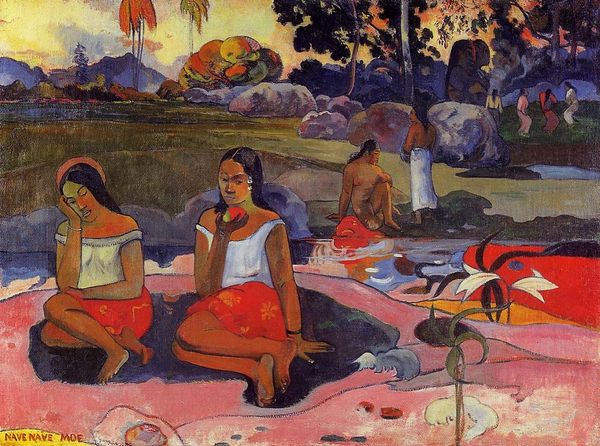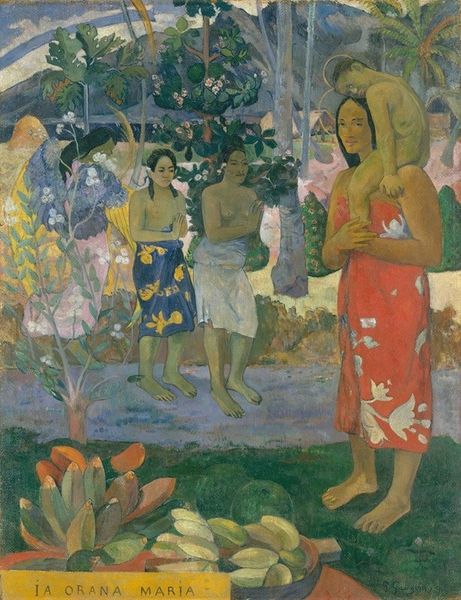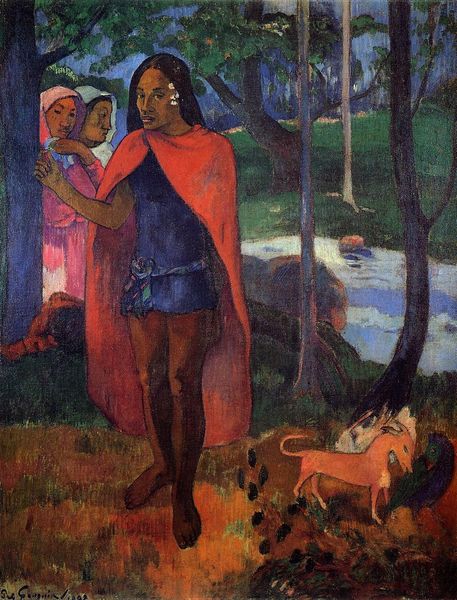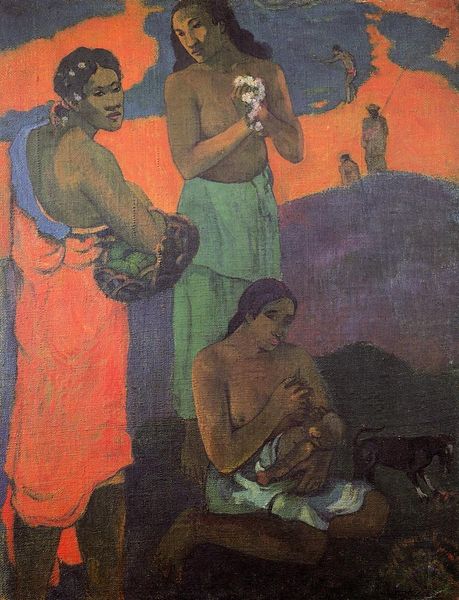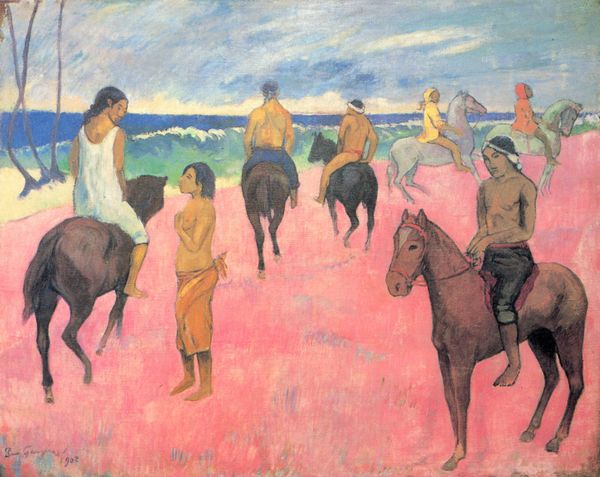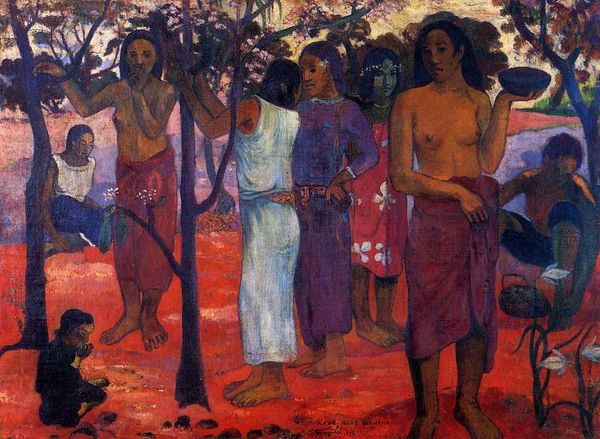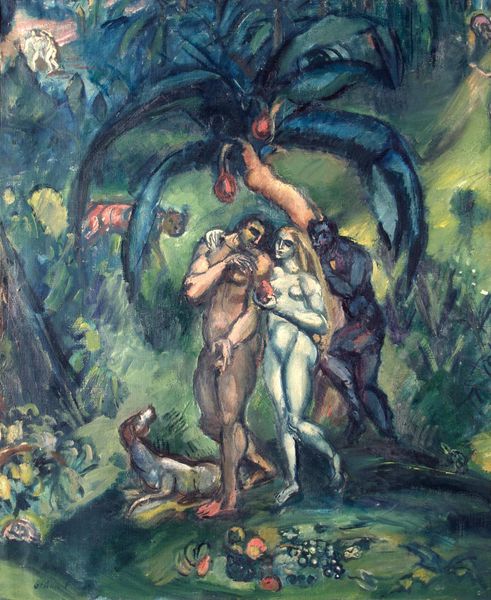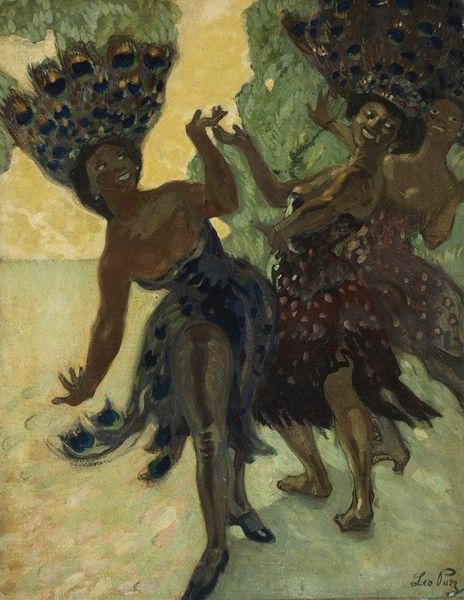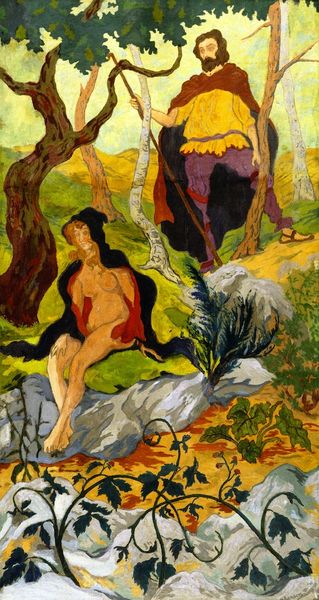
Dimensions: 92 x 73 cm
Copyright: Public domain
Curator: What strikes me immediately is the strange, almost dreamlike quality of this beach scene. Editor: Indeed. We are looking at Paul Gauguin's "Bathers," created around 1902. The medium, oil paint, contributes greatly to the flatness of the composition. Curator: The figures seem almost awkwardly placed within the landscape, disrupting the sense of naturalism. The use of color, that almost overwhelming pink ground... It doesn't quite coalesce for me. Is it a critique of idyllic landscape paintings or some other societal commentary? Editor: Gauguin painted this during his second stay in Tahiti, after he had already developed his signature style. It reflects the West's consumption and romanticizing of other cultures. Consider the context: Gauguin sought a 'primitive' escape from industrialized Europe, but that search was undeniably shaped by colonial power dynamics and art markets. The subjects and labor are easily consumed. Curator: So, you're saying this romantic vision itself is a kind of commodity, further complicated by his artistic production and eventual sale of these canvases. How do you see the application of paint impacting this narrative? The bold, flat areas, like that vibrant blue sea—is it glorifying an untouched culture, or is it flattening them? Editor: Both, I think. Gauguin intentionally used simplified forms and non-naturalistic colors. It's not about representing reality as much as conveying his emotional experience of Tahiti. That is, it focuses on the flattening, decorative surface. The very *making* of the painting becomes an act tied to cultural perception and commodification, a painting created and marketed for Western consumers looking for the exotic. Curator: Interesting. I hadn’t considered the interplay between artistic process and cultural appropriation so explicitly here, the visual flattening echoing the reduction of a culture to mere exoticism for the art market. Editor: And that’s how we often fail to grapple with the complexities of Post-Impressionism in museums. Curator: Food for thought indeed; I'll look at Gauguin very differently now.
Comments
No comments
Be the first to comment and join the conversation on the ultimate creative platform.
